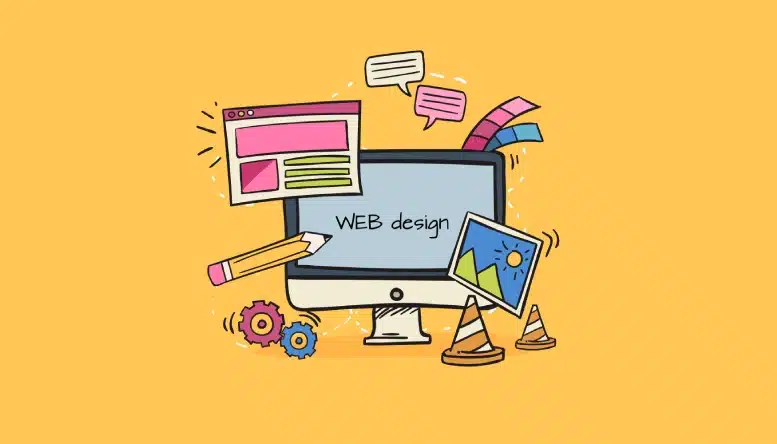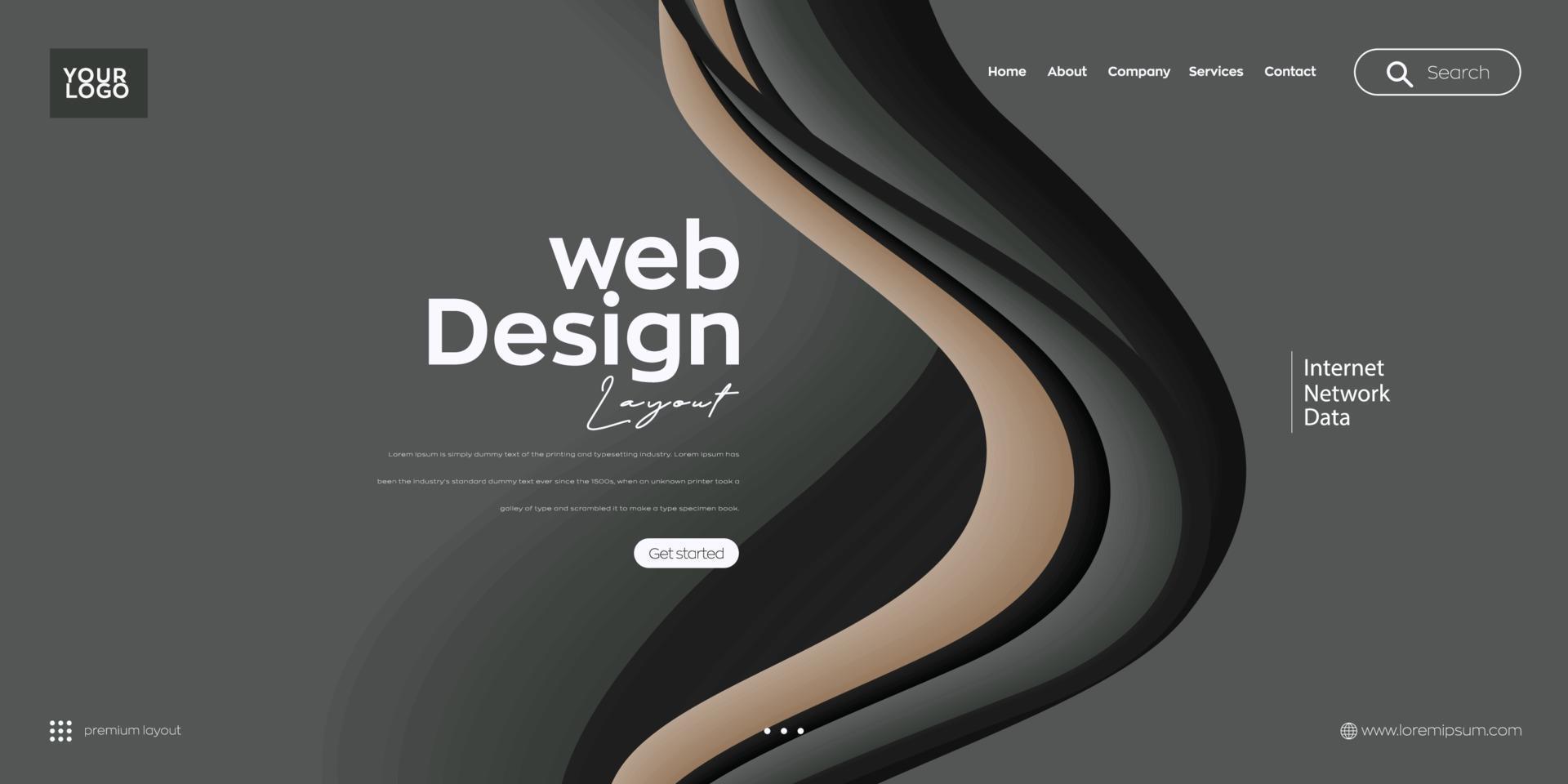Why Businesses Are Investing in Web Design Johannesburg for Higher Conversions
The Impact of Customer Experience on Effective Website Design Strategies
User experience (UX) is an essential consider the effectiveness of internet Design methods. It encompasses use and availability, influencing just how individuals interact with an internet site. A well-crafted UX can result in increased interaction and retention. Several designers ignore essential elements that add to a positive experience. Recognizing these elements is essential for success. What details techniques can boost UX and ultimately drive much better outcomes?
Recognizing User Experience: Interpretation and Significance
User experience (UX) serves as a vital component in the domain name of website design, essentially forming just how users engage with electronic systems. It encompasses the general experience an individual has while steering a website, including aspects such as availability, usability, and fulfillment. A properly designed UX not just improves individual interaction however also influences user retention and conversion rates. Recognizing UX is crucial for designers, as it aids recognize customer demands and choices, permitting for the production of instinctive user interfaces. Concentrating on UX fosters a favorable emotional action from customers, which is vital for building brand loyalty. Eventually, a strong focus on individual experience can result in a successful electronic existence, guaranteeing that sites effectively meet customers' goals and assumptions.
Trick Aspects of Reliable Website Design
Effective website design depends upon several crucial elements that improve user experience. Instinctive navigation, a well-defined aesthetic pecking order, and receptive format flexibility are crucial for making certain and directing customers availability across gadgets. Understanding these elements can greatly affect the overall efficiency of a website.
User-friendly Navigating Design
Exactly how can instinctive navigation Design change a site visitor's experience on a web site? Instinctive navigating streamlines the customer's trip, enabling site visitors to locate details promptly and efficiently. This kind of Design utilizes clear labels, logical framework, and familiar layouts to decrease complication. By focusing on necessary content and organizing it hierarchically, individuals can conveniently locate desired pages without unneeded clicks. Additionally, receptive navigating components, such as dropdown menus and breadcrumb trails, improve functionality throughout tools. Effective user-friendly navigation not just boosts customer contentment but also decreases bounce rates, motivating longer website involvement. Eventually, a smooth navigating experience cultivates a feeling of depend on and self-confidence, making site visitors extra most likely to return and discover better, therefore increasing the overall success of the website.
Visual Power Structure Importance

A well-structured aesthetic pecking order plays an essential function in assisting individuals through a site's content, enhancing the instinctive navigating Design that enhances overall customer experience. By focusing on aspects such as size, shade, comparison, and placement, developers can successfully accentuate vital info and calls to activity. This organization permits customers to swiftly identify vital sections, helping with easier understanding and navigation. Additionally, a constant visual power structure aids establish a cohesive brand name identification, strengthening count on and involvement. When customers can effortlessly refine info, they are most likely to communicate favorably with the site, inevitably resulting in greater conversion rates - Web Design Johannesburg. As an outcome, implementing a clear visual hierarchy is an essential aspect of efficient website design strategies, substantially affecting customer contentment and retention
Responsive Layout Flexibility
What makes a web site really adaptable across various gadgets? Responsive design adaptability is vital for ensuring perfect user experience. This Design method utilizes fluid grids, flexible pictures, and CSS media inquiries to change the design based on the gadget's display dimension and resolution. Reliable receptive Design not just boosts aesthetic appeal however likewise boosts capability by allowing individuals to browse seamlessly, regardless of the system used. Crucial element include focusing on web content hierarchy, making certain touch-friendly interfaces, and preserving quick packing times. By focusing on these elements, developers can produce internet sites that deal with varied individual demands, inevitably bring about greater user fulfillment and involvement. In today's digital landscape, adaptability is no more optional; it is vital for successful internet Design.
The Role of Navigating in Individual Experience
Efficient navigation is essential for improving customer experience on web sites. It acts as a roadmap, leading customers easily via various sections and material. A well-structured navigating system decreases confusion and frustration, enabling visitors to situate info swiftly. Trick aspects of effective navigating consist of consistency, quality, and simplicity. Clear labels aid individuals understand where web links will certainly take them, while regular positioning enhances knowledge throughout pages. Furthermore, a streamlined menu can decrease cognitive overload, making it less complicated for users to choose. Making use of dropdowns and breadcrumbs further boosts usability by providing context and extra pathways. Eventually, solid navigation fosters customer complete satisfaction, encourages longer sees, and raises the possibility of conversions, strengthening its essential function in successful web Design strategies.
Receptive Design: Satisfying Customer Demands Throughout Devices
Receptive Design is increasingly crucial in accommodating the diverse variety of tools utilized to access the internet today. This technique ensures that web sites give a remarkable watching experience, no matter screen size or orientation. By using fluid grids, adaptable pictures, and media queries, responsive Design enables for seamless adjustment throughout tablet computers, smart devices, and desktops. This adaptability not just boosts functionality but additionally deals with differing user preferences and contexts. With even more individuals relying upon smart phones for on the internet interactions, the demand for receptive Design has come to be vital in keeping user satisfaction and involvement. Consequently, organizations that focus on responsive Design can much better fulfill user assumptions, which inevitably adds to greater retention rates and enhanced general efficiency in the electronic landscape.
Enhancing Customer Interaction With Visual Design
Visual Design plays an important function in boosting user interaction by leveraging aspects such as color psychology, typography, and interactive features. The critical use colors can evoke emotional feedbacks, while appropriate typography improves readability and visual appeal - Web Design Johannesburg. Furthermore, including interactive components cultivates customer engagement, producing a more immersive experience
Color Psychology Consequences
Shade psychology plays a vital role in forming individual engagement within website design, as different shades can evoke distinctive emotions and influence actions. Blue often shares trust fund and integrity, making it a preferred option for business web sites. In contrast, red can set off urgency and exhilaration, often seen in call-to-action switches. Environment-friendly normally represents serenity and health, appealing to users in health and environmental fields. By purposefully selecting colors, designers can produce a visual power structure that overviews individual actions and enhances the overall experience. Additionally, consistent color design add to brand name acknowledgment and loyalty. Ultimately, comprehending the emotional effects of shade makes it possible for web developers to craft interesting user interfaces that reverberate with users, causing better communications and conversions.
Typography's Duty in Engagement
Effective website design depends not only on color options however additionally on typography, which greatly impacts user engagement. The option of fonts, sizes, and spacing can either enhance or take away from a customer's experience. Understandable and clear typography allows users to easily digest content, encouraging them to invest even more time on an internet site. In addition, a regular typographic power structure overviews the individual's eye, highlighting crucial info and helping with navigation. Unique typeface choices can also reflect a brand name's identity, developing a stronger emotional link with the audience. Ultimately, reliable typography not only improves readability yet likewise fosters an aesthetically attractive setting, improving overall involvement and encouraging customers to return for future interactions.
Interactive Components Value
While users browse a site, the visibility of interactive aspects significantly boosts their involvement and overall experience. These components, such as buttons, sliders, and quizzes, invite customers to participate actively as opposed to passively consuming material. By cultivating interaction, designers can produce an extra customized experience, permitting customers to attach and explore with the product in purposeful ways. Furthermore, interactive attributes can record attention and keep customers on the site longer, lowering bounce prices. They additionally provide instant responses, strengthening customer actions and informative post encouraging more exploration. Consequently, integrating interactive components right into website design approaches not just boosts visual allure yet additionally greatly adds to user fulfillment and retention, inevitably causing higher conversion rates.
Determining User Experience: Methods and tools
Measuring customer experience is essential for recognizing exactly how efficiently a website fulfills the demands of its individuals. Various devices and strategies are offered for this purpose, including customer testing, surveys, and analytics. Individual testing usually entails observing actual customers as they communicate with a site, giving insights into use issues. Studies can collect direct comments on user satisfaction and regarded value. Analytics devices track user actions, highlighting areas where customers may battle or shed interest. In addition, heatmaps imagine user interactions, disclosing which elements stand out. By using a combination of these techniques, internet designers can acquire a comprehensive understanding of customer experience, leading to notified Design choices that enhance general internet site effectiveness.

Often Asked Questions
Just How Does User Experience Influence Conversion Rates on Internet Sites?
User experience substantially influences conversion prices on sites. A seamless user interface, intuitive navigation, and interesting content can improve user fulfillment, leading to enhanced trust fund and higher probability of finishing desired activities, therefore increasing general conversions.
What Prevail User Experience Errors in Internet Design?
Common individual experience errors in internet Design include cluttered designs, slow-moving loading times, bad navigation, inadequate mobile optimization, absence of clear calls-to-action, and overlooking accessibility guidelines, all of which can substantially hinder user interaction and contentment.
How Typically Should Website Design Be Upgraded for Optimal User Experience?
Web Design need to be updated on a regular basis, ideally every 1-2 years, to adjust to progressing individual choices and technical developments. Regular examinations boost use, making certain that Read Full Article the website remains appealing and pertinent for its target market.

Can User Experience Effect SEO Rankings?
Customer experience significantly affects SEO rankings. Web Design Johannesburg. Online search engine prioritize web sites that provide seamless navigating, quickly loading times, and engaging content, thus compensating websites that boost individual satisfaction with greater visibility in search results
What Are Some Examples of Outstanding Individual Experience in Website Design?
Instances of exceptional individual experience in web Design include intuitive navigation, receptive layouts, quickly packing times, clear phone call to action, and engaging visuals. These elements add to customer fulfillment and motivate prolonged interaction with the internet site.
Customer experience (UX) offers as an important element in the domain of web Design, basically forming exactly how users interact with electronic systems. A well-structured visual hierarchy plays a crucial duty in assisting users through an internet site's web content, matching the intuitive navigating Design that improves overall customer experience. With even more users relying on mobile tools for online interactions, the requirement for responsive Design has actually ended up being crucial in maintaining customer complete satisfaction and engagement. Gauging user experience is essential for recognizing exactly how properly a web site satisfies the needs of its customers. Individual screening commonly includes observing actual customers as they communicate with a website, anchor offering understandings into use problems.